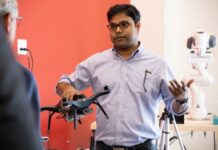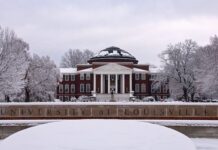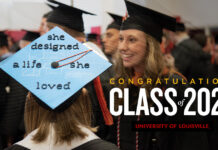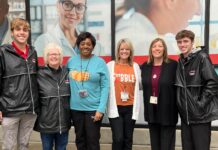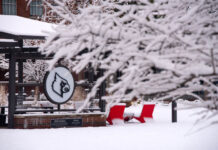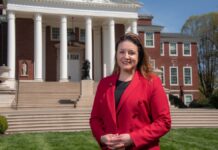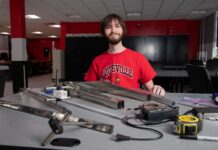Members recently used broken cells they bought off eBay to construct a solar panel that will meet a campus need; the process they used also could help others who need a low-cost means to produce solar power.
Funded by the Conn Center for Renewable Energy Research at the University of Louisville and LVL1, an open community lab and workshop in Louisville, the RE3 Club’s goals are to educate and inspire the UofL student body to pursue an awareness of renewable energy concepts, challenges and innovations. At the same time, it is interested in kindling a spirit of social entrepreneurship among the student body in the hope that it will encourage students to use their classroom skills to come up with renewable solutions to the world’s growing energy problems.
That is just what the club did when it made and installed a solar panel in the Garden Commons greenhouse on Belknap Campus. Garden Commons is a sustainable gardening student organization, and its new greenhouse had been inactive since its construction because its air circulation fans were inoperable.
When RE3 Club members caught wind of the situation, they decided to take the opportunity to put their problem-solving skills to the test. But they didn’t stop there. They decided not only to help a fellow student organization but also to attempt to develop a low-cost method of producing solar power that could be implemented easily in the Third World.
Club members researched the different processes involved in solar panel manufacturing. They analyzed different cell types, panel architectures and a variety of different methods to seal the finished product. Then they designed their own panel and got to work building it.
The result of their efforts was a 120-watt solar panel—produced at roughly half the cost per watt of commercially available solar panels. They accomplished this by making it primarily out of recycled materials.
Solar cells are fragile and breakage causes a lot of waste during normal solar panel manufacturing. Damaged solar cells are unfit to be sold commercially but still produce electricity just as efficiently as they did before being damaged. Because of electrical limitations, however, it is difficult to incorporate damaged cells into commercial panels without a large overall efficiency loss: They stunt the energy production of any cells to which they are connected.
They also avoided using tempered glass and large sealing ovens, both of which are extremely expensive, by modifying the architectures of traditional solar panels and the processes involved with sealing them.
“The RE3 Club really came through for us. It is great to see like-minded RSOs working together to accomplish bigger things while simultaneously increasing student involvement in sustainability issues,” said Jordan DelaGarza, the student manager of the Garden Commons greenhouse.







